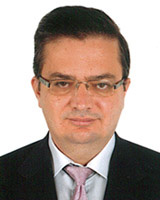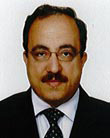Effective administration of the healthcare workforce is needed to provide efficiency and equity in access to healthcare services1. Therefore, a sufficient and balanced distribution of physicians at national and international levels is crucial for individual-level access to high quality healthcare services, and also for effective human resources policies2. However, Europe and North America, which have 20% of the world's population, have approximately half the world's physician stock and 60% of nurses worldwide; whereas Asia, with approximately 50% of the world's population, has only 30% of the global physician, nurse, and midwife stock3.
The maldistribution of healthcare workers, particularly physicians, has long been an issue4,5. The literature shows that large cities or wealthier areas have much higher numbers of healthcare workers per unit of population than rural and underdeveloped areas6. A World Health Organization (WHO) 2006 report stated that half of the world's population lives in rural areas, but rural physicians number less than one-fourth of the world's physicians7. While 20% of the US population lives in underdeveloped and rural areas, less than 11% of physicians serve in these areas8, and almost 9% of physicians in Canada serve in rural areas where 24% of the total population lives9.
Turkey is facing similar healthcare human resources problems. It lags behind other WHO European Region and Organisation for Economic Co-operation and Development (OECD) countries in terms of the number of physicians per unit of population10,11. It is expected that the geographic distribution of healthcare workers is highly skewed to urban and developed areas. While the Turkish Ministry of Health (MoH) reported considerable improvement from 2002 to 2007 in terms of the number of specialist physicians, the problem of distribution disparity according to location is unchanged. Reasons for the imbalanced distribution of physicians are, for example, inappropriate resource allocation policies, low socioeconomic levels, shortage of medical equipment, and lower security in some regions12.
Efforts are being made in Turkey as well as other countries to reduce the maldistribution of the healthcare workforce by making these areas more attractive through providing financial and non-financial incentives to the workers12. These incentives are, for example, better salaries, privileges regarding specialty training and benefits such as higher professional ranks, educational bursaries for their children, low loan rates when purchasing houses or cars, and better and more active social environment offering theaters, cinemas and education facilities to contribute to cultural and social development12. Other means of producing physicians to meet the healthcare needs of those in underdeveloped areas include: compulsory medical service, special programs to train physicians to work in underdeveloped areas, and opening medical schools in less developed areas13,14. Various immigration policies are being developed in order to attract quality healthcare workforce from developing countries15. Healthcare workers, who come from developing countries, are more likely to work in underdeveloped or rural areas than others16.
Turkey, as in many other countries, has attempted to solve this problem with a number of enforcements and incentives. The major aim of Health Transition Program (HTP; implemented by the MoH since 2003) was to provide quality health care for everyone, everywhere and at all times15. Healthcare workforce planning, therefore, was one of the HTP's components17. An intervention conducted in Turkey since 1981 to eradicate health workforce maldistribution was the compulsory service of physicians in underserved areas. Physicians, who complete the term of duty (between 10 and 24 months, based on the service field) are awarded a diploma. However the practice of compulsory service led to controversy and was abolished in 2003. It was replaced by the voluntary contracting of health personnel within the scope of HTP for areas of health personnel shortages.
The salaries of physicians working as public civil servants in Turkey are fixed; however, the contract-based employment model offers approximately 2.5 times higher wages for physicians employed in underdeveloped regions, a strategy designed to establish and preserve a balance between region and health workforce. Unfortunately, this strategy did not attract sufficient physicians, particularly specialist physicians. Therefore, the practice of compulsory service was reintroduced in 2005, and both contracted health personnel and compulsory service have been in effect since then. Currently, physicians who have completed compulsory service can work as contracted physicians in underdeveloped areas.
As well as these policies there have been various interventions and incentives, such as the prioritization of underdeveloped areas (using six service areas determined by the MoH) for a first appointment, and the short-term assignment of midwives and nurses to areas in extreme need. These policies have achieved a significant success18.
This is the first study in Turkey into the views of new graduate physicians, who are not yet employed, on working and/or studying in underdeveloped areas. This study is intended to provide guidance for future health resource allocation policies.
A questionnaire was prepared based on a literature review of the physician workforce in underdeveloped areas and the outcomes of the focus group interviews. An expert was consulted to review and approve the questionnaire content. The questionnaire was finalized in a pilot study with randomly selected, newly graduated physicians to examine the clarity of the questions. The final questionnaire consisted of two parts: (i) physicians' demographic characteristics; and (ii) physicians' views on working in underdeveloped areas.
The study was conducted in Turkey from September to November 2009. All physicians who graduated from medical school in 2009, prior to their employment and specialist training, were included in the study (N=4753). Of these, 3690 completed the online questionnaires (response rate 77.6%). The physicians' responses were entered into a Microsoft Access database and coded prior to analysis.
Categorical variables were summarized using frequencies and percentages, and those that could be related to a desire to work in underdeveloped areas were explored using χ2 analysis. Active employee data for the years 2006, 2009 and 2011 were collected from the MoH Directorate General for Personnel in order to summarize the existing status of health workforce distribution.
Using six zones (determined by the MoH according to the socioeconomic development index of provinces and regions established by the State Planning Organization) the researchers calculated the physician density. A number of indicators such as population density, fertility rate, literacy rate, schooling ratio, infant mortality ratio, gross domestic product per capita and import-export per capita are used to develop this index. For this reason the study employs the term 'underdeveloped zone' rather than 'rural areas' because in Turkey the urban-rural distinction is based on population alone (< 20 000 = rural; ≥ 20 000 = urban). However, this distinction does not provide meaningful about the levels of development. Therefore, this study adopted the MoH's socioeconomic development-based distinction as the basis for comparison, and describes the first three zones (1st, 2nd, 3rd) as 'developed' and the last three zones (4th, 5th, 6th) as 'underdeveloped' zones. The software SPSS v15 (www.spss.com) was used for statistical analysis. P-values ≤ 0.05 were considered statistically significant.
Distribution of physician workforce in Turkey
The number of specialists, GPs, residents and the total number of physicians per 1000 population in the six zones are shown according to socioeconomic development levels in 2006, 2009 and 2011 (Table 1). The total number of physicians tended to be lower in relatively underdeveloped areas. Similarly, there were fewer specialists and residents in underdeveloped areas compared with more developed areas. However, the distribution of GPs among the six zones was more balanced. In 2011, there was an increase in the number of physicians per 1000 population and a decrease in the differences between the regions. It is also striking that the numbers of specialists, residents, and the total number of physicians in Zone 5 were different from those in Zones 4 and 6 in all years, although all three zones are underdeveloped.
Table 1: Number of physicians per 1000 population in six zones
designated according to socioeconomic development levels, Turkey19,20
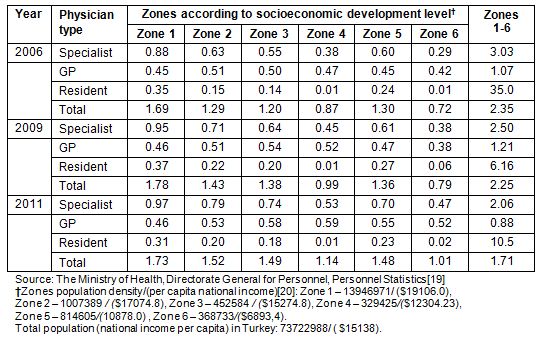
Opinions of recently graduated physicians regarding service
The age of the study population was between 22 and 35 years, with a median age of 24 years. Among these, 52.5% were male. According to the physicians' self-statements of family income, 38.7% come from low-income families, 42.3% from middle-income and 19.0% from high-income families.
A total of 13.5% of the recently graduated physicians had a desire to work in underdeveloped areas. Most of the recently graduated physicians were planning to pursue specialization with only 1.7% wanting to remain a GP.
The recently graduated physicians' opinions on compulsory service and contracted health personnel implementations were analyzed. In total, 49.2% thought the contracted health personnel implementation was not useful, 12.3% thought it was useful, and 38.5% thought it was useful to a certain degree. According to those who found the contracted health personnel implementation useful, the most problematic aspect of (this) implementation was the undetermined period of working in an underdeveloped area (32.9%). However, those who found the contracted health personnel implementation not useful, found employee personal rights to be problematic (46.6%). A total of 19.9% of the recently graduated physicians found compulsory service to be useful in solving the problem of physician shortages in underdeveloped areas, 75.7% found it useful to a certain degree, and 4.4% did not think compulsory service was useful.
With regard to the issue of physician motivation, important for an effective healthcare service, the participants were requested to indicate the factors that would affect their performance at work. For female physicians the most important factor was better working hours (23.2%), followed by better salaries (20.7%) and a better working environment (13.9%). For male physicians, the most important factor was better salaries (31.0%), followed by better working hours (15.1%) and having a good relationship with their colleagues (13.0%).
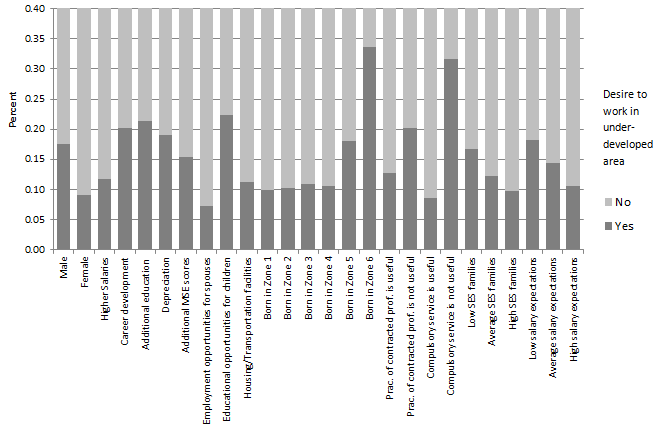
Figure 1: Distribution of physicians according to their decision to work in underdeveloped areas.
Female physicians reported less desire to work in underdeveloped areas (Fig1). Physicians who were born in Zone 6, which contains underdeveloped cities, and those who thought that the practices of compulsory service and contracted health personnel are useful, had greater desire to work in underdeveloped. When there was a higher expectation of salary, there was a lower desire to work in underdeveloped areas. Moreover, physicians from low SES families were more inclined to work in underdeveloped areas.
The results of the cross-table analysis and χ2 test regarding the variables thought to be related to the physicians' desire to work in underdeveloped areas are provided (Table 2). There is a statistically significant relationship between gender and the desire to work in underdeveloped areas.
Table 2: Cross-table analysis results regarding physicians' desire to work in underdeveloped areas
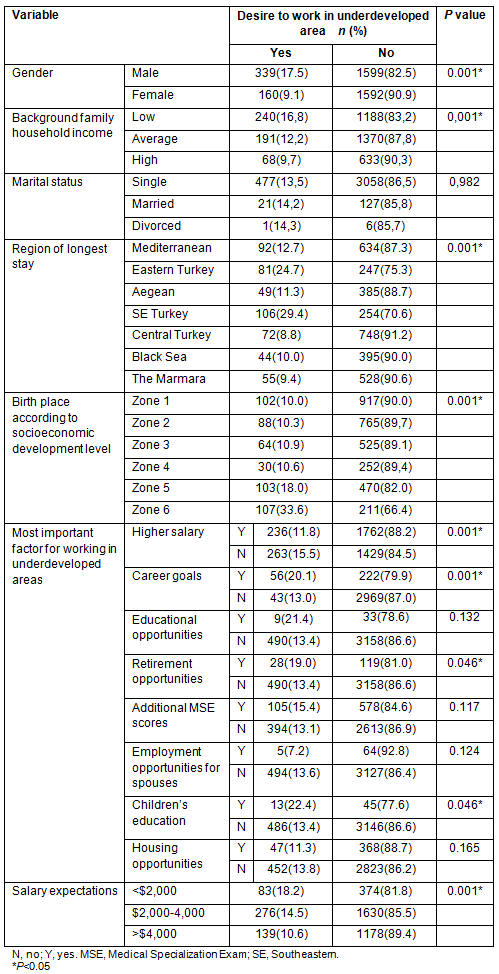
There is a statistically significant relationship between the desire to work in underdeveloped areas and birthplace and the region of longest stay. Particularly physicians who had lived longer in Eastern and Southeastern Turkey had greater desire to work in underdeveloped areas. Although 10% of physicians who were born in Zone 1 had a desire to work in underdeveloped areas, 18% and 33.6% of those who were born in the Zones 5 and 6, respectively, desired to work in underdeveloped areas. The majority of female physicians (75.6%) and 60.6% of male physicians were born in the first three (most developed) zones. Only 4.6% of female physicians were born in Zones 6, while this was so for 12.5% of male physicians. Regarding the places where participating physicians had lived for long periods, only 12.0% of female physicians had lived in the least developed areas in the past.
A statistically significant relationship was found between the desire to work in underdeveloped areas and the level of background-family household income, as well as salary expectations. It is suggested that higher salaries, additional income sources, career development opportunities, better educational facilities for children, and better retirement opportunities for those who work in underdeveloped areas would impact on physicians' desire to work in underdeveloped areas. However, there was no statistically significant relationship between the desire to work in underdeveloped areas and incentives such as additional educational opportunities, additional Medical Specialization Exam scores, employment opportunities for spouses or better housing and transportation facilities. Only 11.8% of the physicians who thought better salary was the most important factor in working in underdeveloped areas had a desire to work in underdeveloped regions. In contrast, 22.4% of physicians who gave priority to quality educational opportunities for children had a desire to work in underdeveloped areas. There was no statistically significant relationship between physicians' desire to work in underdeveloped areas and their marital status or future plans such as working outside of medicine, obtaining specialized training, or continuing their career as a GP.
Discussion
Human resources policies and the tendency of health professionals to work in developed areas and large cities cause problems for people living in rural and underdeveloped areas in accessing health services. The findings of this study suggest significant improvement in the distribution among regions by years. This improvement has been affected by a number of policies under the HTP, implemented to improve the geographical distribution of the health labor force. However, compulsory public service is also considered to have made a significant impact on this improvement. The obligation of physicians to practice in state-identified zones relieves the problem of physician undersupply in underdeveloped and less preferred zones. However, contract-based employment, initially introduced as an alternative to compulsory public service to incentivize physicians for voluntary practice in the underdeveloped zones by paying higher wages, was not successful until supported by the reactivated compulsory public service. This strengthens the evidence for the effectiveness of compulsory public service in balancing the geographical distribution of health personnel, as has been found in other countries21. Freyhwot et al discuss similar impacts created by compulsory public service in Turkey and other countries13.
Certain characteristics and the family background of physicians have been found to play an important role in their preference for work location22,23. For this reason, this study searched for such characteristics. In common with the findings Doescher M et al24 and Carter25, it was observed that females are less likely to work in underdeveloped areas. This may be the result of traditional approaches, family-oriented thinking of women, or their opinion that underdeveloped areas pose security problems. Apart from this, the preference for practice in rural and underdeveloped zones is a complex issue affected by a number of factors, such as income and life style, as discussed by Dunbabin and Levitt26. That our study indicates physicians from low-income families are more likely to work in underdeveloped areas suggests a link between physicians' standards of living and their choice of working place. Physicians from low-income families are more likely to work in areas with relatively lower standards of living and populated by those with low incomes. Salary expectations also reflect physicians' approach to standard of living, because underdeveloped areas are less acceptable for physicians who expect higher salaries.
With regard to these outcomes, the number of physicians working in underdeveloped areas may be increased by awarding scholarships to students from low-income families. However, in parallel with Laven and Wilkinson's results regarding physician-background factors27, an important relationship was found between the physician's will to work in underdeveloped areas and the areas where he/she has spent most of his/her time. Similarly, Somers et al indicated that the will to practice in a rural location becomes more apparent the longer the physician spends there28. It was notable in the present study that physicians who lived for a long period in relatively underdeveloped areas, such as Eastern and Southeastern Anatolia, were more likely to prefer working in these areas. Similarly, physicians who were born in underdeveloped provinces were more willing to work in such areas, compared with colleagues born in provinces with higher levels of development.
In a similar study in Turkey the percentage of recently employed physicians who wanted to work in underdeveloped areas was found to be 20.5%29. The fact that this is higher than for recently graduated physicians who have not yet started to work suggests that opinions may change after commencing employment and after working in different areas of the country. In evaluating these outcomes, attention must be paid to the fact that most of the medical schools are in developed provinces, and 87.3% of the physicians who participated in the study received their education in the most developed areas (Zones 1, 2 & 3).
Policy-makers should consider the lack of medical schools' programs in Turkey that aim to produce physicians for underdeveloped areas. Policy-makers should also consider that students are not equipped with adequate knowledge and experience of health services in rural areas. This is likely to promote physicians' interest in working in large cities and major hospitals rather than in rural and underdeveloped areas. Moreover, expectations such as a better career and prestige, as well as the will to work in better places with better facilities, could be considered the underlying cause of most participating physicians' demands to receive specialty training. Establishing medical schools in underdeveloped areas not only provides potential health services to people living in these areas, but has also been found to change the opinion of the students in such schools regarding these areas30. The high number of physicians in Zone 5 is likely to be due to the presence of more medical schools compared with the Zones 4 and 6, which supports the importance of establishing medical schools in underdeveloped areas.
A study from Japan supports the success of such local medical schools in balancing geographical the distribution of healthcare personnel31. Low numbers of physicians in underdeveloped areas are the result of inadequate numbers of faculties providing specialty training. Increasing the number of medical schools is likely to increase the number of medical students; therefore, with the positive effect of physician background the employment of physicians can be expected to improve in parallel with the medical training ratio in the area. The lower number of female physicians from underdeveloped areas compared with those from more developed areas should also be evaluated in this way. The problem of limited female physicians from underdeveloped areas is considered to stem from lower education levels in these areas. If faculties are established in these areas, not only will the level of education improve, but it will also be assist in promoting women's education.
Some studies have indicated that financial incentives and rewards are not significant factors in a physician's preference for work in underdeveloped areas. Further, they emphasize that such incentives could create an additional long-term cost burden that could affect other sectors6,12. On the contrary, some other studies suggest that financial incentives-based policies create positive impacts on geographical distribution22. Nevertheless the physicians in the present study considered high salaries the most important incentives. However intern physicians in Turkey cannot be paid before they graduate and commence work, and the participating physicians were recently graduated and had not yet started to receive a salary, which may have affected this outcome. Moreover, contracted health personnel implementation, for which a financial incentive was prioritized, was not as successful as was anticipated. It seems therefore that financial incentives alone will not resolve the shortage of physicians in underdeveloped areas; nor will the provision of high salaries.
The indefinite official working period of contracted physicians seems to create the perception of an obligation to work in one area for a long time. Thus, due to poor communication and lack of trust in this implementation, the government's aim to encourage physicians to work in underdeveloped areas has not been fully met. In the present study, the physicians who believed contracted health personnel implementation and compulsory service to be useful were more willing to work in underdeveloped areas. Therefore, more positive outcomes are likely to be possible if physicians can be persuaded about the worth and necessity of such implementations and their participation in them. However, within the scope of non-financial incentives, the attention of policy-makers to matters such as career improvement entitlements (eg more in-service education, greater access to postgraduate training), providing earlier retirement opportunities for physicians who have worked in underdeveloped areas, and providing better education for physicians' children are also considered to be useful.
Limitations
That all participants were recently graduated physicians and lacked professional experience may have biased their answers. Therefore further studies that include recently employed physicians, currently working in underdeveloped areas, and other health personnel would be useful.
The outcomes of this study provide guidance for policy-makers in the field of health workforce management. The regional distribution of physicians appears to have improved in 2011, compared with 2006. The policies implemented under the HTP have contributed to reducing the inter-regional inequity of physician supply. Moreover, this study revealed that decision-makers, in addition to having a strong political commitment, should also identify the conditions for physicians' practicing in underdeveloped areas and develop financial and non-financial incentives within this framework.
Acknowledgements
The authors express their thanks to the Minister of Health Prof Dr Recep Akdag, and Prof Dr Nihat Tosun Undersecretary of Ministry of Health, who had encouraged them to conduct this study. The Ministry of Health and School of Public Health are also gratefully acknowledged for their assistance in collecting the data for this study.
References
1. Mollahaliloglu S, Hülür U, Gümrükçüoglu O, Ünüvar N, Aydin S, Sur H (Eds). Saglikta Insan Kaynaklari ve Politika Olusturma Çalistayi [Human Resources for Health and Policy Development Workshop]. Ankara, Turkey: Turkish Ministry of Health, School of Public Health, 2007.
2. OECD. Health at a glance, 2007: OECD Indicators. Paris: OECD, 2007.
3. Chen L, Evans T, Anand S, Boufford JI, Brown H, Chowdhury M et al. Human resources for health: overcoming the crisis. Lancet 2004; 364(9449): 1984-1990.
4. Pong RW. Strategies to overcome physician shortages in northern Ontario: a study of policy implementation over 35 years. Human Resources for Health 2008; 6: 24.
5. Barnighousen T, Bloom D. Financial incentives for return of service in underserved areas: a systematic review. BMC Health Services Research 2009; 9: 86.
6. Dussault G, Franceschini MC. Not enough there, too many here: understanding geographical imbalances in the distribution of the health workforce. Human Resources for Health 2006; 4: 12.
7. WHO. World Health Report 2006: Working together for health. (Online) 2006. Available: http://www.who.int/whr/2006/whr06_en.pdf (Accessed 18 October 2012).
8. Ricketts TC. The changing nature of rural health care. Annual Review of Public Health 2000; 21: 639-657.
9. Dumont JC, Zurn P, Church J, Thi CL. International mobility of health professionals and health workforce management in Canada: myths and realities. OECD Health working paper no 40. Paris: OECD, 2008.
10. OECD. Health Data 2011. (Online) 2011. Available: http://www.oecd.org/health/healthpoliciesanddata/oecdhealthdata2012-frequentlyrequesteddata.htm (Accessed 18 October 2012).
11. WHO. European Health for All Database (HFA-DB). A regional office for Europe. (Online) 2012. Available: http://data.euro.who.int/hfadb/ (Accessed 18 October 2012).
12. WHO. Increasing access to health workers in remote and rural areas through improved retention: background paper for the first expert meeting to develop evidence-based recommendations to increase access to health workers in remote and rural areas through improved retention. Geneva: WHO, 2009.
13. Frehywot S, Mullan F, Payne PW, Ross H. Compulsory service programmes for recruiting health workers in remote and rural areas: do they work? Bulletin of World Health Organization 2010; 88: 364-370.
14. Hays R. Developing health education to address recruitment and retention issues. In: Proceedings, World Rural Health, International Conference; 1-3 May 2002; Melbourne, VIC, Australia; 2002. Available: http://abc.net.au/rural/worldhealth/papers/84.htm
15. Moran A, Nancarrow S, Butler A. "There's no place like home" A pilot study of perspectives of international health and social care Professional working in the UK. Australia and New Zealand Health Policy 2005; 2: 25.
16. Martineau T, Decker K, Bundred P. "Brain drain" of health professionals: from rhetoric to responsible action. Health Policy 2004; 70: 1-10.
17. Akdag R, Unuvar N, Aydin S. Health Transformation Programme, Ankara: Ministry of Health of Turkey, 2003.
18. Mollahaliloglu S, Basara BB, Eryilmaz Z. Health Statistics Yearbook 2010. Ankara: Ministry of Health of Turkey, 2011.
19. Turkish Ministry of Health, Personnel Directorate. Annual personnel statistics. Ankara: Turkish Ministry of Health, 2011.
20. Wikipedia. Provincial per capita national income in Turkey. (Online) no date. Available: http://tr.wikipedia.org/wiki/T%C3%BCrkiye'de_iller_baz%C4%B1nda_ki%C5%9Fi_ba%C5%9F%C4%B1na_d%C3%BC%C5%9Fen_y%C4%B1ll%C4%B1k_milli_gelir#cite_note-1 (Accessed 10 June 2012).
21. Wiwanitkit V. Mandatory rural service for health care workers in Thailand. Rural and Remote Health 11:1583. (Online) 2011. Available: www.rrh.org.au (Accessed 18 October 2012).
22. Wilson NW, Couper ID, De Vries E, Reid S, Fish T, Marais BJ. A critical review of interventions to redress the inequitable distribution of healthcare professionals to rural and remote areas. Rural and Remote Health 9: 1060. (Online) 2009. Available: www.rrh.org.au (Accessed 18 October 2012).
23. 23. Matsumoto M, Inoue,K, Kashima S, Takeuchi K. Characteristics of physicians, their migration patterns and distance: a longitudinal study in Hiroshima, Japan. Rural and Remote Health 12: 2027. (Online) 2012. Available: www.rrh.org.au (Accessed 18 October 2012).
24. Doescher M, Ellsbury K, Hart L. The distribution of rural female generalist physicians in the United States. Journal of Rural Health 2000; 16(2): 111-118.
25. Carter RG. The relation between personal characteristics of physicians and practice location in Manitoba. Canadian Medical Association Journal 1987; 136(4): 366-368.
26. Dunbabin J, Levitt L. Rural origin and rural medical exposure: their impact on the rural and remote medical workforce in Australia. Rural and Remote Health 3: 212. (Online) 2003. Available: www.rrh.org.au (Accessed 18 October 2012).
27. Laven G, Wilkinson D. Rural doctors and rural backgrounds: how strong is the evidence? A systematic review. Australian Journal of Rural Health 2003; 11(6): 277-284.
28. Somers GT, Strasser R, Jolly B. What does it take? The influence of rural upbringing and sense of rural background on medical students' intention to work in a rural environment. Rural and Remote Health 7: 706. (Online) 2007. Available: www.rrh.org.au (Accessed 18 October 2012).
29. Mollahaliloglu S, Kosdak M. Yeni Göreve Yeni Baslayan Pratisyen Hekimlerin SDP Hakkindaki Görüsleri [Views of the recently employed general practitioners on HTP]. Report. School of Public Health, Turkish Ministry of Health, 2010.
30. Longombe AO. Medical schools in rural areas necessity or aberration? Rural and Remote Health 9: 1131. (Online) 2009. Available: www.rrh.org.au (Accessed 18 October 2012).
31. Matsumoto M, Inoue K, Kajii E, Takeuchi K. Retention of physicians in rural Japan: concerted efforts of the government, prefectures, municipalities and medical schools. Rural and Remote Health 10: 1432. (Online) 2010. Available: www.rrh.org.au (Accessed 18 October 2012).
